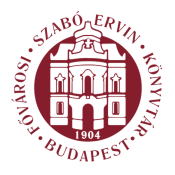Prohászka László: Polish Monuments - Our Budapest (Budapest, 2001)
commander Jan Korkozowicz, were also commemorated by a plaque placed in the Roman Catholic church in Máriaremetei út, in District II (see page 57). On the initiative of Mieczyslaw Ostoja Mitkiewicz, a former pupil of the Polish secondary school in Bala- tonboglár, a memorial plaque was placed on the wall of the prison in Gyorskocsi utca in District II and unveiled with military honours on 1 September 1999 in remembrance of the Polish patriots who were held there and executed by the Germans in 1944. A bilingual inscription below a bronze Polish eagle reads: In memory of those Polish refugee patriots who, between 1939 and 1944, were active on the staff of the Budapest representative office of the government of the Polish Republic, the Polish Civic Committee, the Office of Polish Catholic Priests, the Polish Institute and the Polish Library, as well as priests, teachers and pupils of the Polish grammar school in Balatonboglár, who were held in the prison of the Gestapo after 19 March 1944, were transported to the concentration camp of Mauthausen and died martyrs. Their compatriots. Warsaw-Budapest 1999. CciLTtJRE AND SCIENCE Fortunately, the era after the Austro-Hungarian compromise of 1867 was not defined solely by circumstances of war. Like Hungary, Poland gave the world several outstanding personalities of universal culture. The creation of Esperanto (1887) was the work of a Polish ophthalmologist. A portrait of Ludwik Zamen- hof (1859-1917) was designed by Tamás Gyenes in 1958, but it was not until 1989 that the bronze statue was put up in a public square, namely in front of the Rác baths, in the part of Buda called the Tabán. The statue is a distinctively characteristic portrait of the man who tried to bring nations closer to one another by creating a new language. The inscription on the plain, one and a half metre limestone pedestal reads: Dr. L.L. /ZAME14HOF/ 1859-1917/ The creator of Esperanto. 41
